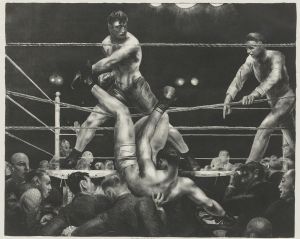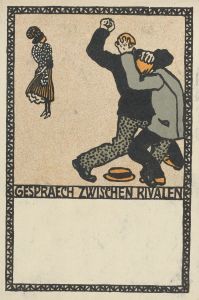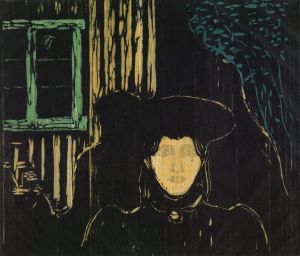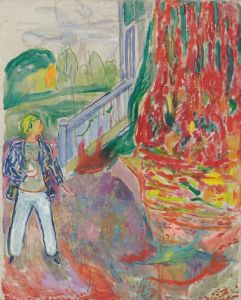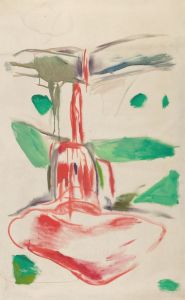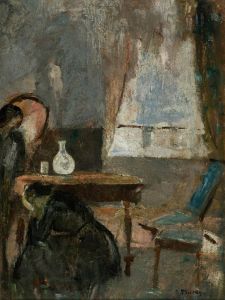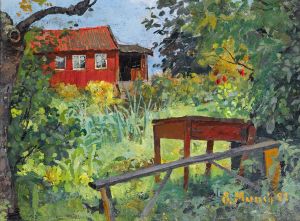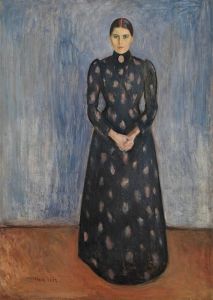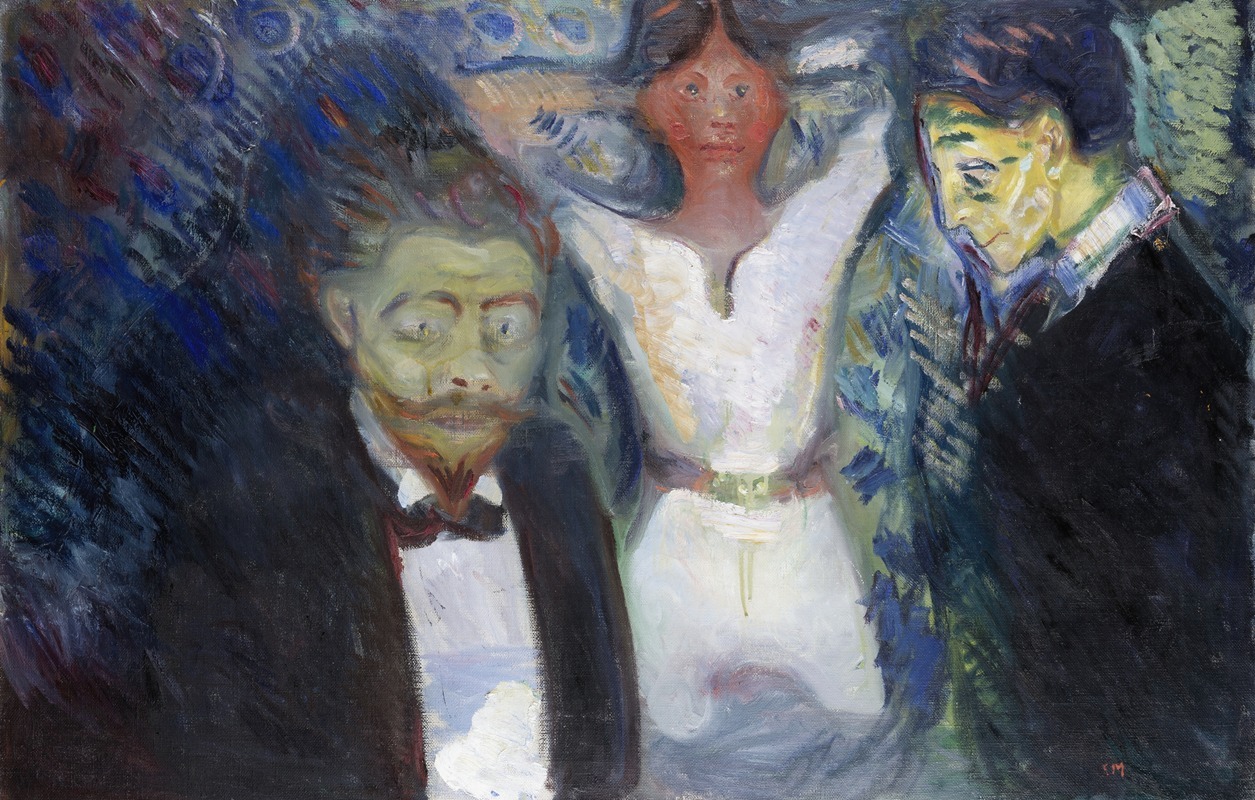
Jealousy
A hand-painted replica of Edvard Munch’s masterpiece Jealousy, meticulously crafted by professional artists to capture the true essence of the original. Each piece is created with museum-quality canvas and rare mineral pigments, carefully painted by experienced artists with delicate brushstrokes and rich, layered colors to perfectly recreate the texture of the original artwork. Unlike machine-printed reproductions, this hand-painted version brings the painting to life, infused with the artist’s emotions and skill in every stroke. Whether for personal collection or home decoration, it instantly elevates the artistic atmosphere of any space.
"Jealousy" is a painting by the renowned Norwegian artist Edvard Munch, created in 1895. Munch is best known for his evocative and emotionally charged works, and "Jealousy" is no exception. This painting is part of a series that explores complex human emotions, a central theme throughout Munch's oeuvre.
The painting depicts a scene that is rich in emotional tension and psychological depth. In the foreground, a man stares directly at the viewer with an intense and troubled expression, embodying the emotion of jealousy. Behind him, a couple is engaged in an intimate moment, seemingly oblivious to the man's presence. The composition and the use of color in the painting are typical of Munch's style, characterized by bold lines and a vivid palette that enhances the emotional impact of the scene.
"Jealousy" is often interpreted as a reflection of Munch's own experiences and emotional struggles. Munch's life was marked by personal turmoil, including troubled relationships and a deep-seated anxiety, which he frequently explored in his art. The theme of jealousy, in particular, recurs in several of his works, suggesting its significance in his personal narrative.
The painting is also notable for its symbolic elements. The figures in the background are often seen as representing temptation and desire, while the man in the foreground embodies the destructive nature of jealousy. Munch's use of light and shadow further accentuates the emotional divide between the figures, creating a sense of isolation and inner conflict.
"Jealousy" is part of Munch's larger series known as "The Frieze of Life," which delves into themes of love, anxiety, and death. This series includes some of Munch's most famous works, such as "The Scream" and "Madonna," and is considered a significant contribution to Symbolist and Expressionist art movements. Munch's ability to convey deep psychological states through his art has earned him a lasting legacy, influencing countless artists and movements that followed.
The painting has been exhibited in various galleries and museums, contributing to Munch's international reputation. It reflects not only the personal dimensions of Munch's life but also broader human experiences, making it a timeless piece that continues to resonate with audiences today.
In summary, "Jealousy" by Edvard Munch is a powerful exploration of human emotion, rendered with the artist's characteristic intensity and symbolic depth. It stands as a testament to Munch's skill in capturing the complexities of the human psyche, ensuring his place as a pivotal figure in the history of modern art.





